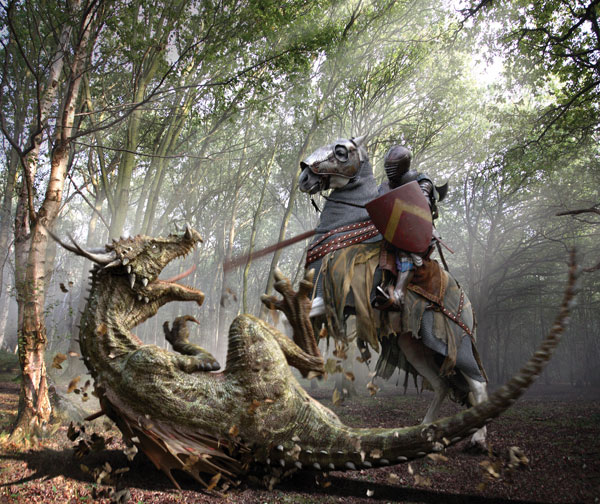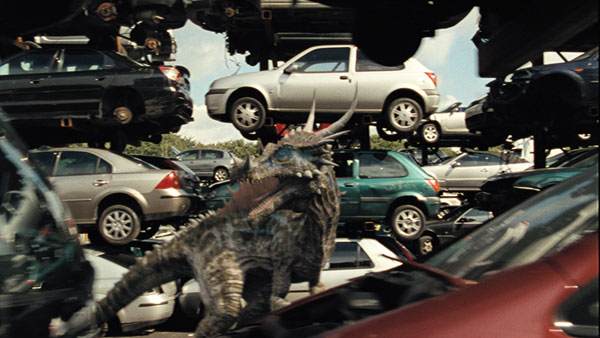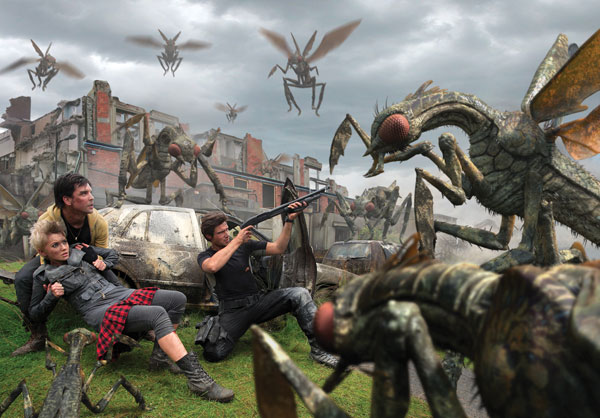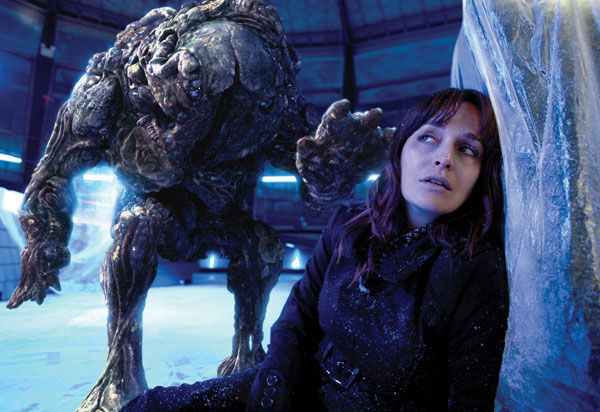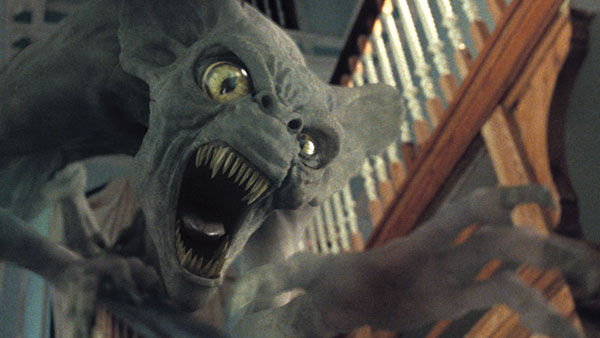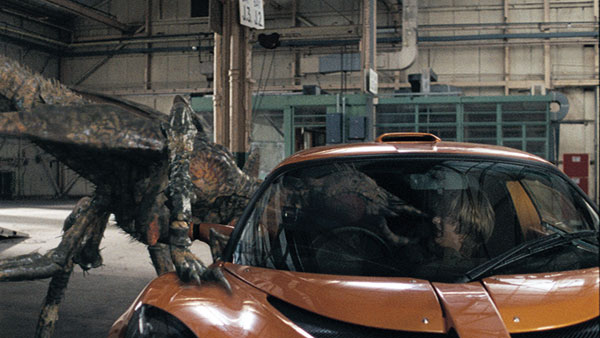Initially signed for 720 shots over the ten episodes, Framestore contributed around 1,000 in all, about 600 of which were creature shots.
Lead character Professor Nick Cutter (Douglas Henshall) regroups his loyal crew in this new series, preparing for battle against creatures derived from ancient folklore, myths and legends. Prehistoric animals also inspired Framestore’s design of many of the beasts, such as Pristichampsus - a kind of Super Croc, the Diictodons - an almost-mammalian herbivore that gnaws its way through a hospital, and the Gigantosaurus, a carnivore that makes the T Rex look tame.
Still more fantastic animals are the Camouflage Beast, blending cleverly into the background, and the Killer Fungus, formerly human and now a menacing spore. Other VFX work includes a CG helicopter and plane, the gateway called ‘Anomaly’ to the worlds in which the creatures and the team encounter each other, and some spectacular environmental work including a post-apocalyptic cityscape incorporating a blasted, burned out version of the company's offices.
Problematic beasts
Starting work in April 2008, Framestore gathered mostly the same team for Series 3 as for the second series, but VFX Supervisor Christian Manz and VFX Producer Matt Fox made significant changes to the creature development process. Fox noted that the previously set-up, physical models of the creatures were slowing them down.
“For instance, a creature which looked good as a static model might throw up all sorts of issues when you tried to rig and animate it - sometimes they literally couldn't walk - so time was being spent on 'work-arounds' for these issues. In addition, the whole process of sculpting and Lidar scanning provided more information than was useful at first, so that data had to be stripped off the scans in order to create a lo-res CG model, and then added on later.
Scripted creatures
As the show became more fantasy based and action heavy, Framestore suggested that they complete the concept work on the creatures in-house, working out how the creatures would move as part of their concept design. The producers at Impossible Pictures agreed to try out the new method, though physical models of the first few creatures were made as a 'safety', should the technique prove unworkable. But it was an immediate improvement, and some of the models were never touched.
Executive Producer Tim Haines added to the scripted creature description with a brief including elements such as reference looks from nature or fiction. Using this material, Lead Texture Artist and Creature Concept Designer Daren Horley could create 2D concept art, and work with the design team to identify where problems were likely to arise. Once the concept was signed off, the 3D modelling began.
In addition to his duties as VFX Supervisor, Series 3 also gave Christian Manz some directing experience, leading the 2nd Unit team through some of the shots required for a fast car chase sequence. He’s proud of his team’s work on the show. "It's the culmination of all we've done over the last 3 years," he said, "The shows are better and so are the creatures we've provided."
New tools
On the technical side, Lead TD Jason Mayo and his team used several new tools on this series. "We're using a newer version of MentalRay and a lot more of our own proprietary plug-ins and R&D work. We wrote custom shaders for all of the creatures. We render all our passes in one go now - the shader spits out a beauty render and all the separate outputs, which is what Renderman been doing for film for years. 3D motion-blur has also been integrated across the board, which helps it look more realistic, for instance, when a creature is running towards the camera. Also integrated into the shader is subsurface scattering, which helps create better skin qualities.
"For a bird-like creature that appears in one of the later episodes we used a dynamic system - originally developed by the ‘Prince Caspian’ team for Aslan - to fluff up his feathers and make them bounce as he ran along. Finally, for the Camouflage Beast, we figured a nice way of incorporating the back plates - that is, what was behind him - into his subsurface scatter, so it looks like the blood under his skin was doing the camouflaging. The change in his skin colour is quick, but there's a slight delay in its catching up with the background - it works very well."
Creature Competition
Mark Brocking, Animation Supervisor for the series, said the one month pre-production period they had for this series gave them invaluable time to plan the creature design. “If you look at what we did in the first season with, for example, the Camouflage Creature, who has facial close-ups and a whole range of expressions - acting, really - there's no comparison."
A boost for the Framestore team this time was the competition that ITV had run during Series 2, offering viewers the chance to design their own creature for an episode of Series 3. Framestore were pleased to compile the short list from the thousands of entries and help choose a winner. The winning creature, named Mega-optera, was the most distinctive, which they thought would work well within the show, and they invited the designer into Framestore see the whole process that turned his concept design into a living creature. Mega-optera can be seen in Episode 8.
Teamwork
‘Primeval’ continues to challenge the Framestore team with ambitious scripts calling for spectacular VFX, delivered to tight TV deadlines. Fox said they all appreciated the willingness to participate that the series' Producer Tim Bradley and Line Producer Mike Treen have shown, immersing themselves in the VFX process alongside the artists. “It would be difficult to have made the economical and artistic inputs we did without the producer's blessing," he said.
Another mark of this recognition came when Manz and Fox were invited to review the Series 3 scripts at treatment and early draft stages, to suggest how the stories and production could be strengthened through sensible VFX design.
|
